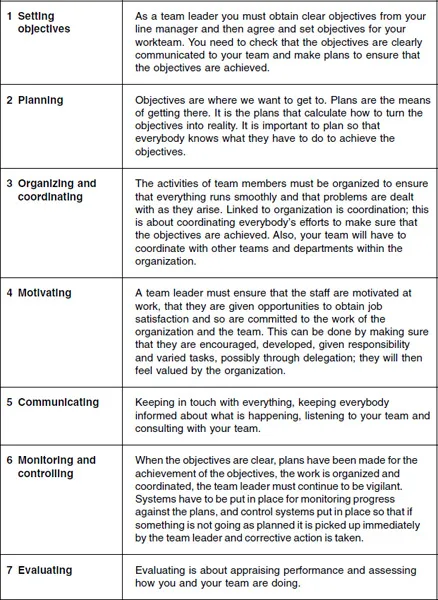
- 256 pages
- English
- ePUB (mobile friendly)
- Available on iOS & Android
People and Self Management
About This Book
People and Self Management leads the reader through all the skills needed for today's supervisor/team leader, including: * how to assess and improve your workplace performance;
* the essential skills of effective self management;
* the management of change. The Team Leader Development Series is an essential tool towards gaining the Supervisory Management Award. Consisting of four practical and interactive textbooks, this series will be invaluable not only to students, but also as a guide individuals and organisations seeking to improve their business performance at the first level of management.Key learning features: * Learning Objectives to enable the reader to assess the knowledge gained throughout the series.
* Activities to put the learning into practice.
* Case studies - 'true-life' scenarios!
* Workbased Assignments which will provide evidence for S/NVQ portfolios.
* Language is straightforward and direct, contextualised to relate to team leaders and supervisory managers working in a wide range of industry sectors.
* Influential protagonists in the field will be alluded to as appropriate to support the learning.
* Action plan to take the learning forward.
Frequently asked questions
1The job of a team leader
Learning objectives
Introduction
What team leaders do
Activity 1 | What do you think are the main activities of a team leader? Compare your answers to the key managerial functions shown in Figure 1.1. |
 | ||
Figure 1.1 Managerial Function |

Activity 2 | Consider your job as a team leader and complete the table below. | ||
Managerial element | Example of an activity carried out by me, in my role as a team leader in my organization, that demonstrates that this is part of a team leader's role | ||
1 Setting objectives | |||
2 Planning | |||
3 Organizing and coordinating | |||
4 Motivating | |||
5 Communicating | |||
6 Monitoring and controlling | |||
7 Evaluating | |||
Setting objectives
Planning
Table of contents
- Front Cover
- Halftitle
- Title Page
- Copyright
- Contents
- Introduction
- 1 The job of a team leader
- 2 Team leaders and organizations
- 3 Workteams
- 4 Recruiting and selecting your team
- 5 Leading your team
- 6 Training and developing your team
- 7 Assessing and developing your own performance
- 8 Managing yourself
- 9 Managing individuals
- 10 Decision making and problem solving
- 11 Working with others
- 12 Managing change
- References
- Further Reading
- Index